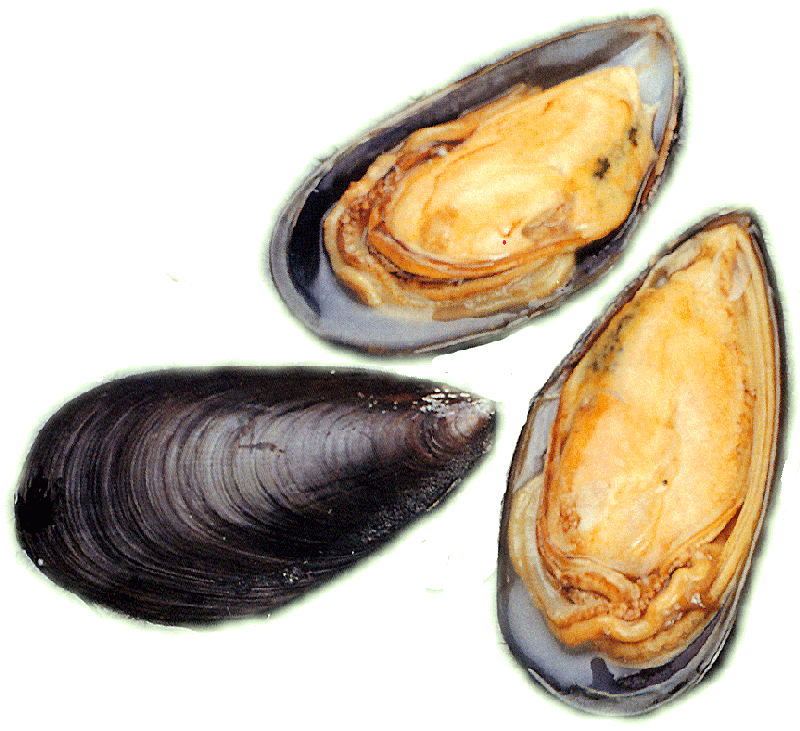|
|
|
||||||
|
Blue mussels grow wild and are farmed throughout Europe, in Holland, France, Spain, Chile and the east coast of North America, notably in Maine and Canada's Prince Edward Island. Mussels are bivalves and are found in the intertidal zone on rocks and pilings and in beds to depths of 30 feet. Cultivated blue mussel are grown on ropes or post or in mussel parks. Rope cultivated mussel grow at a rate five times faster than and have three times the meat of wild mussels. A West Coast Blue Mussel is smaller than the east coast variety and is cultivated in Washington state. Blue mussels have a rich sweet flavor, and a pump tender texture. The color of the flesh can vary from white to orange and range in size from 10 to 20 to a pound. Mussels have beards, or byssus threads, which the mussel uses to anchor itself. The beard should be removed prior to cooking.
Discard mussels with broken shells or with shells gaping open, as this indicated the animal has died. A small gap is ok as long as when tapped it closes.
|
|||||||
|
|
|||||||

